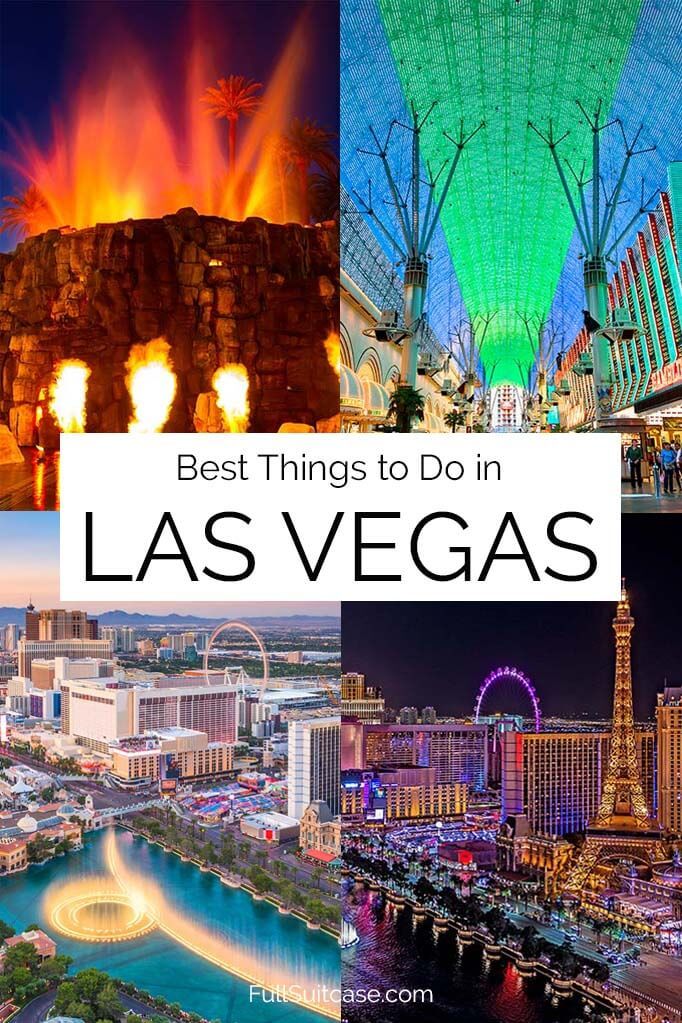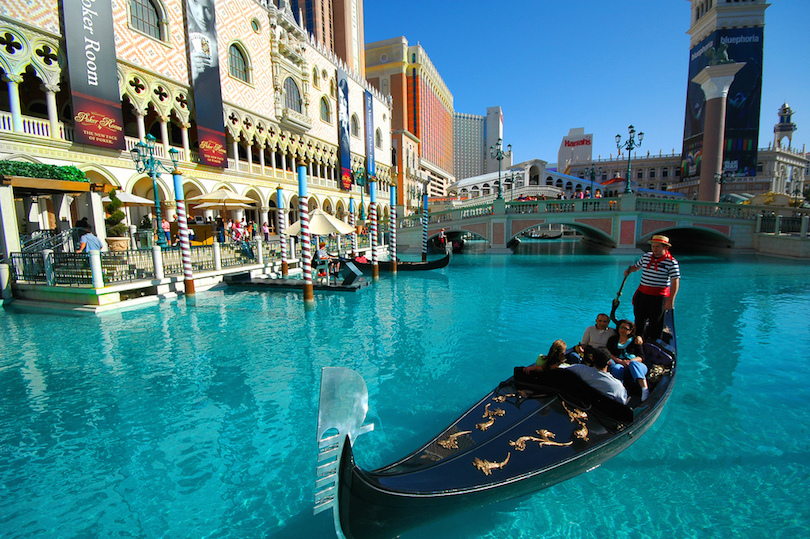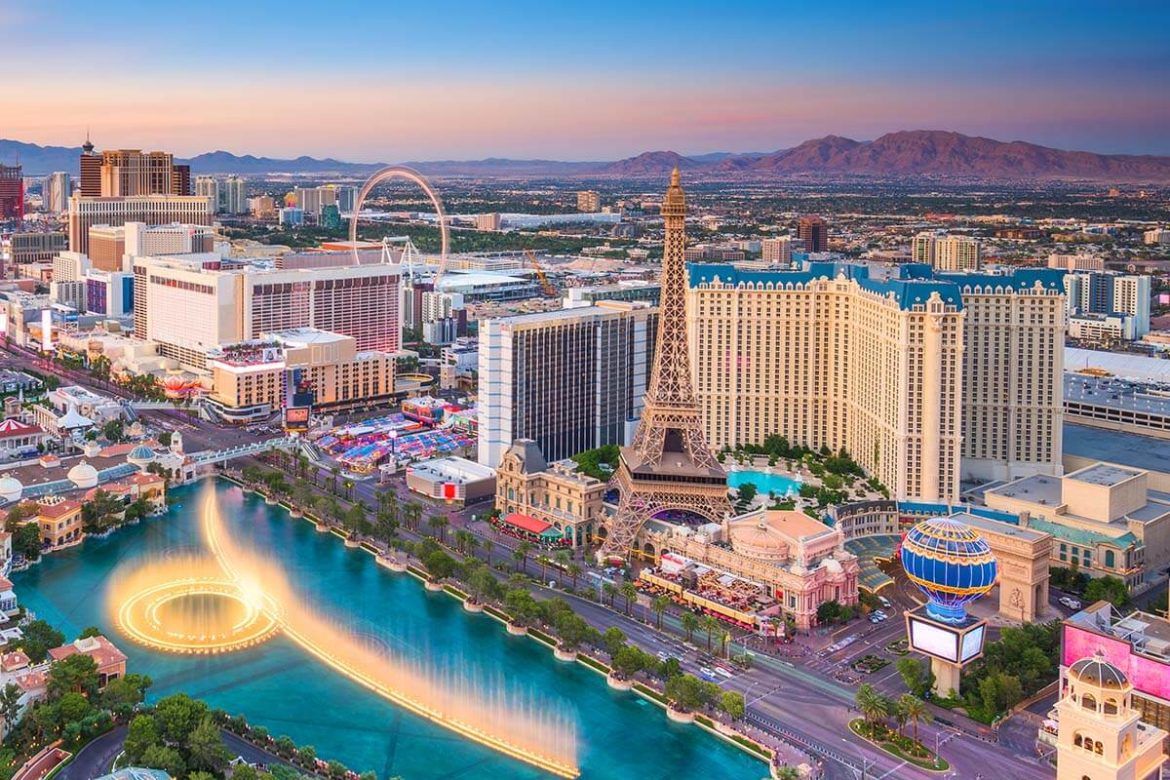
Las Vegas, a name synonymous with dazzling lights, non-stop entertainment, and unparalleled luxury, stands as an audacious testament to human ambition in the heart of the Nevada desert. More than just a gambling mecca, it’s a global phenomenon that reinvents itself constantly, offering an intoxicating blend of world-class dining, spectacular shows, high-end shopping, and unique attractions that cater to every whim and budget. From its humble beginnings as a dusty railroad stop to its current status as the "Entertainment Capital of the World," Las Vegas beckons millions each year, promising an escape where the extraordinary is the norm.
This comprehensive guide delves into the vibrant tapestry of Las Vegas, exploring its captivating history, unveiling its top attractions, offering practical travel tips, navigating accommodation and transportation, and pinpointing the best times to visit this luminous oasis.
A Glimpse into the Past: Las Vegas’s Enduring History

Related Articles about Las Vegas: The Luminous Oasis in the Desert:
- Poland: A Journey Through History, Culture, and Untamed Beauty
- Unveiling the Jewels of the Desert: A Comprehensive Guide to the United Arab Emirates
- Morocco: A Kaleidoscope of Culture, Color, and Adventure
- Lisbon: A Symphony of Sunlight, History, and Charm
- Croatia: A Sun-Kissed Symphony of History, Nature, and Coastal Charm
The story of Las Vegas is as dramatic and captivating as the city itself. Its origins trace back to the early 20th century when it was merely a watering hole ("Las Vegas" means "The Meadows" in Spanish) for travelers and a crucial stop on the Union Pacific Railroad. The true turning point arrived in 1931 with two pivotal events: the legalization of gambling in Nevada and the commencement of the Hoover Dam construction. The dam project brought an influx of workers seeking entertainment, laying the groundwork for the city’s future.
The post-World War II era saw the rise of the iconic "Strip," largely fueled by figures with ties to organized crime, most notably Bugsy Siegel, who opened the Flamingo Hotel in 1946. These early resorts weren’t just casinos; they were opulent playgrounds that attracted Hollywood stars and high rollers, setting the stage for Las Vegas’s reputation as a glamorous, albeit slightly illicit, destination.
By the 1960s, corporate giants began to acquire the mob-run casinos, bringing a new era of legitimacy and expansion. Visionaries like Howard Hughes invested heavily, further transforming the city’s skyline. The 1990s witnessed another massive shift as Las Vegas diversified, moving beyond just gambling to embrace family-friendly attractions, elaborate themed resorts, and world-class entertainment, culminating in its current incarnation as a diverse global tourist destination that continues to push the boundaries of spectacle and luxury.
The Luminous Core: Top Attractions in Las Vegas
The sheer volume of attractions in Las Vegas can be overwhelming, but certain experiences stand out as quintessential to any visit.
The Iconic Strip Experiences
-
The Fountains of Bellagio: Arguably the most famous free attraction in Las Vegas, this mesmerizing water ballet outside the Bellagio Hotel is a must-see. Choreographed to a diverse soundtrack ranging from opera to pop, the fountains shoot water hundreds of feet into the air, creating a breathtaking spectacle that repeats every 15-30 minutes throughout the day and evening. Complementing this is the Bellagio Conservatory & Botanical Gardens, an ever-changing indoor wonderland of seasonal floral displays that transforms five times a year.

-
The Venetian Resort & Gondola Rides: Step into a meticulously recreated Venice, complete with cobblestone streets, canals, and St. Mark’s Square. The highlight here is undoubtedly the Gondola Rides, offering a romantic journey either outdoors under the Vegas sky or indoors beneath painted ceilings that mimic a perpetual twilight. The resort also boasts the Grand Canal Shoppes, world-class dining, and the spectacular "Atomic Saloon Show."
-
Eiffel Tower Viewing Deck at Paris Las Vegas: Ascend a half-scale replica of Paris’s iconic Eiffel Tower for unparalleled 360-degree views of the Strip and the surrounding valley. The observation deck, 460 feet above ground, offers a particularly stunning panorama at night when the city lights up. Below, the Paris Las Vegas resort captures the charm of the City of Lights, complete with a replica Arc de Triomphe and French-inspired dining.
-
Caesars Palace & The Forum Shops: A legendary resort since 1966, Caesars Palace immerses visitors in an opulent Roman Empire theme. Beyond its vast casino, it’s home to the Forum Shops, an upscale mall designed to resemble an ancient Roman street, complete with talking statues and a stunning spiraling escalator. The "Fall of Atlantis" fountain show provides free entertainment with animatronic figures and fire effects.
-
The High Roller at The LINQ Promenade: For panoramic views of the Strip and beyond, board the High Roller, the world’s tallest observation wheel. Standing 550 feet tall, its spacious, air-conditioned cabins (pods) offer a comfortable 30-minute rotation, providing unobstructed vistas. The LINQ Promenade itself is a vibrant outdoor entertainment district with shops, restaurants, and bars.
-
The Stratosphere Tower (The Strat): Soaring 1,149 feet into the sky, The Strat offers not only the highest observation deck in the United States but also three heart-stopping thrill rides perched at the very top: the Big Shot (shooting riders straight up), Insanity the Ride (a spinning arm extending over the edge), and X-Scream (a teeter-totter that propels riders face-down over the edge). For those less adventurous, the panoramic views from the observation deck are spectacular, especially at sunset.
Beyond the Strip’s Glow
-
Fremont Street Experience (Downtown Las Vegas): A dazzling departure from the Strip, Fremont Street is the original heart of Las Vegas. This pedestrian mall is covered by a massive LED canopy, the Viva Vision screen, which puts on spectacular light and sound shows hourly after dusk. Live music stages, street performers, and the SlotZilla Zipline (which sends riders flying under the canopy) create an electric, old-school Vegas vibe.
-
The Mob Museum, National Museum of Organized Crime and Law Enforcement: Housed in a former courthouse where some of the Kefauver hearings on organized crime took place, this museum offers an incredibly immersive and engaging look at the history of the mob in America and its impact on Las Vegas. Interactive exhibits, authentic artifacts, and compelling storytelling bring this fascinating and often brutal history to life.
-
The Neon Museum: A truly unique attraction, the Neon Museum is a "boneyard" for iconic Las Vegas signs from bygone eras. Guided tours explain the history and significance of these glowing relics, offering a nostalgic journey through the city’s past. The evening tours, when some signs are re-illuminated, are particularly magical.
-
Pinball Hall of Fame: A quirky and fun attraction, this non-profit museum houses the world’s largest collection of pinball machines, all of which are playable. From vintage classics to modern marvels, it’s a paradise for gaming enthusiasts of all ages.
World-Class Entertainment & Dining
Las Vegas is renowned for its entertainment, from breathtaking theatrical productions to intimate comedy shows and residencies by global music superstars.
- Cirque du Soleil: The city is home to several permanent Cirque du Soleil shows, each a masterpiece of acrobatics, artistry, and storytelling. "O" at the Bellagio (aquatic spectacle), "Mystere" at Treasure Island (classic Cirque), and "Ka" at MGM Grand (epic theatrical martial arts) are among the most celebrated.
- Magic and Comedy: Legendary magicians like Penn & Teller and mind-bending mentalists like Mat Franco consistently draw crowds, while comedy clubs host both established names and rising stars.
- Concerts and Residencies: Major music acts frequently perform in Las Vegas’s state-of-the-art arenas and theaters, with many artists holding long-term residencies.
- Celebrity Chef Restaurants: Las Vegas has become a culinary capital, boasting an astonishing concentration of restaurants by Michelin-starred and celebrity chefs like Gordon Ramsay, Wolfgang Puck, and Joël Robuchon. From haute cuisine to innovative casual dining, the options are endless.
- Buffets: While the high-end dining scene flourishes, the legendary Las Vegas buffet remains an iconic experience, offering vast spreads of international cuisine, often with live cooking stations and decadent dessert sections.
Nature’s Grandeur: Day Trips
Beyond the city’s neon glow, the natural beauty of the American Southwest offers incredible day trip opportunities.
-
Hoover Dam: A marvel of engineering and a National Historic Landmark, the Hoover Dam is a monumental concrete arch-gravity dam in the Black Canyon of the Colorado River. Visitors can take guided tours of the dam’s interior, learn about its construction, and marvel at its scale and power. It’s about a 40-minute drive from the Strip.
-
Red Rock Canyon National Conservation Area: Just a short 20-30 minute drive west of the Strip, Red Rock Canyon offers a dramatic contrast to the city’s artificiality. With stunning red rock formations, scenic drives, and numerous hiking trails for all skill levels, it’s a perfect escape for nature lovers.
-
Grand Canyon National Park: While a longer day trip (2-5 hours depending on the rim), a visit to the Grand Canyon is an unforgettable experience from Las Vegas. The West Rim (home to the Skywalk glass bridge) is closer and often accessed via bus tours or helicopter. The South Rim, the most famous and photographed section, offers more expansive views and is typically a longer drive, though small plane and helicopter tours are popular.
Navigating the Oasis: Travel Tips for a Seamless Visit
To maximize your Las Vegas experience, keep these practical tips in mind:
- Hydrate, Hydrate, Hydrate: The desert climate is extremely dry. Drink plenty of water, even when you don’t feel thirsty, to avoid dehydration.
- Wear Comfortable Shoes: You’ll be doing a lot more walking than you anticipate, even within a single resort. Comfortable footwear is non-negotiable.
- Book in Advance: Especially for popular shows, fine dining reservations, and hotel rooms during peak season or major events, booking well ahead is crucial.
- Set a Budget: It’s easy to get carried away in Las Vegas. Set daily limits for gambling, entertainment, and discretionary spending.
- Factor in Resort Fees and Tipping: Most hotels charge a daily resort fee (often $30-$50+), which covers amenities like Wi-Fi and gym access. Tipping is customary for bellhops, housekeepers, cocktail servers, and dealers.
- Visit Mid-Week if Possible: Weekends and holidays see higher prices and larger crowds. Mid-week visits (Tuesday-Thursday) often offer better deals and a more relaxed atmosphere.
- Protect Yourself from the Sun: Even in cooler months, the desert sun is strong. Use sunscreen, wear a hat, and sunglasses.
A Bed for Every Budget: Accommodation Options
Las Vegas boasts an incredible array of accommodation, catering to every style and budget.
- Luxury Resorts: Resorts like the Wynn/Encore, Bellagio, The Venetian/Palazzo, and ARIA offer unparalleled luxury, exquisite dining, lavish pools, and impeccable service. Expect higher prices, but also an elevated experience.
- Mid-Range Resorts: Options like the MGM Grand, Planet Hollywood, Flamingo, and The LINQ offer a fantastic balance of amenities, central locations, and more accessible price points. These still provide full casino experiences, multiple dining options, and impressive pools.
- Budget-Friendly Options: For those looking to save, hotels slightly off-Strip (e.g., Rio, Palms) or in Downtown Las Vegas (Golden Nugget, Circa Resort & Casino) often provide more affordable rates while still offering casino action and easy access to attractions via transportation.
- Non-Gaming Hotels: For a quieter experience, consider non-gaming hotels like the Vdara, Waldorf Astoria Las Vegas, or Trump International Hotel, which offer luxurious stays without the casino floor.
Getting Around: Transportation in Las Vegas
Navigating the vast distances of Las Vegas requires a strategy.
- Walking: While many attractions are within walking distance, distances on the Strip are deceptive. Walking from one end to the other can take hours.
- The Monorail: An elevated train that runs along the east side of the Strip, connecting seven stations from MGM Grand to SAHARA Las Vegas. It’s efficient for covering long distances quickly, but its stops are often set back from the resorts.
- The Deuce and SDX Bus: The Deuce is a double-decker bus that runs 24/7 along the Strip and into Downtown. The SDX (Strip & Downtown Express) is a faster, limited-stop service. Both are affordable ways to get around.
- Taxis and Rideshare (Uber/Lyft): Readily available at designated pick-up/drop-off points at every resort. These are convenient for door-to-door service, especially for groups or late nights.
- Hotel Trams: Several free trams connect specific resorts (e.g., Aria Express Tram, Bellagio-CityCenter-Park MGM Tram, Mandalay Bay-Luxor-Excalibur Tram).
- Car Rental: Only recommended if you plan extensive day trips outside the city. Parking can be expensive at Strip resorts.
Timing is Everything: Best Time to Visit
Choosing the right time to visit Las Vegas can significantly impact your experience.
- Spring (March to May) and Fall (September to November): These are generally considered the best times to visit. The weather is pleasant and mild (average temperatures in the 70s-80s°F / 20s-30s°C), ideal for exploring outdoors, enjoying pool days, and dining al fresco.
- Summer (June to August): Las Vegas summers are intensely hot, with temperatures frequently exceeding 100°F (38°C). While resorts are equipped with air conditioning and stunning pools, outdoor activities can be uncomfortable. However, it’s often when the best hotel deals can be found.
- Winter (December to February): Winters are cool, with average daytime temperatures in the 50s-60s°F (10s°C), and nights can be chilly. While pool season might be limited, it’s a great time for indoor attractions, shows, and holiday decorations. Avoid major conventions (like CES in January) and holiday weekends, as prices skyrocket and crowds swell.
Conclusion
Las Vegas is a city that defies easy categorization. It’s a living, breathing spectacle that seamlessly blends the fantastical with the pragmatic, offering an endless array of experiences from the sublime to the audacious. Whether you’re drawn by the allure of the gaming tables, the spectacle of world-class entertainment, the culinary delights, or the stunning natural landscapes just beyond its borders, Las Vegas promises an unforgettable journey. With a little planning and an open mind, you’re sure to discover why this desert oasis continues to captivate hearts and imaginations worldwide. Pack your comfortable shoes, prepare for sensory overload, and get ready to experience the magic of Las Vegas.





